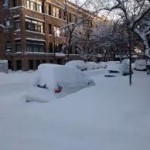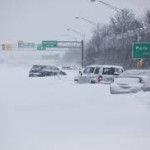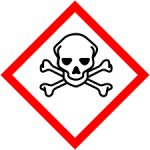How to Prepare for Winter Storms and Extreme Cold
Winter storms can range from moderate snow over a few hours to blizzards with blinding, wind-driven snow that can last for several days. Many winter storms are accompanied by dangerous low temperatures, strong winds, ice, sleet, and freezing rain.
Winter storms can knock out power, heat, communications services to homes and office. These services can be affected for days. Extreme cold and heavy snowfall can prevent use of roadways for large distances.
Winter storms and extreme cold can cause accidents and death as a result of icy roads and hypothermia from prolong exposure to cold temperatures. Preparations can make the difference from life and death. Although this is not a comprehensive list of everything, here are some basic steps to protect yourself and family.
Ways to prepare for Winter Storms and Extreme Cold:
- Create and Emergency Kit
- Additional items for your Emergency Kit
- Rock salt or ice melt for walkways
- Sand to improve traction
- Snow shovels and other removal equipment
- Heating fuel or heat supply such as seasoned wood for fireplace or wood burning stove.
- Adequate clothing ( hats, socks, mittens/gloves) and blankets to keep you and others warm
- Create a family communication plan
- Have a NOAA weather radio or local radio /television news and listen for updates. Be informed about changing weather conditions
- Minimize travel. Travel only if absolutely necessary and keep an Emergency Kit in your vehicle
- Bring pets and service animals, and livestock inside during winter weather. Keep animals and livestock sheltered and ensure access to non-frozen drinking water
Winterizing your vehicles:
- Antifreeze levels to avoid freezing
- Battery and ignition systems to ensure operability
- Brakes – check for wear and proper fluid levels
- Exhaust system – check for and repair leaks or replace pipes. There is extreme danger from carbon monoxide
- Fuel and air filters to prevent water in the engine systems.
- Keep fuel tank full to keep from freezing
- Heater and defroster working properly
- All lights and flashing hazard lights working properly
- Oil – check levels and weight to ensure you are using the recommended viscosity for winter weather
- Thermostat – ensure it is working properly
- Windshield wipers and washer fluid sprayers– make sure they work properly and you have sufficient fluid.
- Use winter tires – good winter tires help provide better traction in snow and icy conditions. Some locations may require use of tire chains and / or studded snow tires
- Adequate insulation can prolong the warmth of your home. Insulate attics, walls, use caulking and weather stripping to help prevent loss of heat or entry of cold into your home through doors and windows. Consider storm doors and windows or covering with plastic.
- Clear rain gutters, remove debris from your roof or cut tree branches near your roof, and repair any leaks in the roof.
- Insulate pipes and allow faucets to drip or have a trickle to avoid freezing pipes in extreme cold
- Maintain heating systems and chimneys. Keep them clean and inspect them regularly
- All fuel-burning equipment should be run out of doors or properly vented to the outside and kept clear.
- Learn how to turn off water using the shut off valve in case of pipe bursts
- Keep fire extinguishers nearby and make sure everyone knows how to use them. Alternate methods of heating your home can be fire or carbon monoxide hazards. Be sure to follow all instructions and practice safety rules.
- Ensure your roof and building structure can sustain the weight of unusually heavy snow or other debris. Ensure water properly drains to allow snow melt and rain to flow away from the roof and house. You may want or need to contract a qualified, licensed structural engineer to inspect your roof and building.
Caution: Carbon Monoxide Kills
- Never use a generator, grill, camp stove or other gasoline, propane, natural gas or charcoal¬ burning devices inside a home, garage, basement, crawlspace or any partially enclosed area. Locate unit away from doors, windows and vents that could allow carbon monoxide to come indoors.
- The primary hazards to avoid when using alternate sources for electricity, heating or cooking are carbon monoxide poisoning, electric shock and fire.
- Install carbon monoxide alarms in central locations on every level of your home and outside sleeping areas to provide early warning of accumulating carbon monoxide.
- If the carbon monoxide alarm sounds, move quickly to a fresh air location outdoors or by an open window or door.
- Call for help from the fresh air location and remain there until emergency personnel arrive to assist you.



